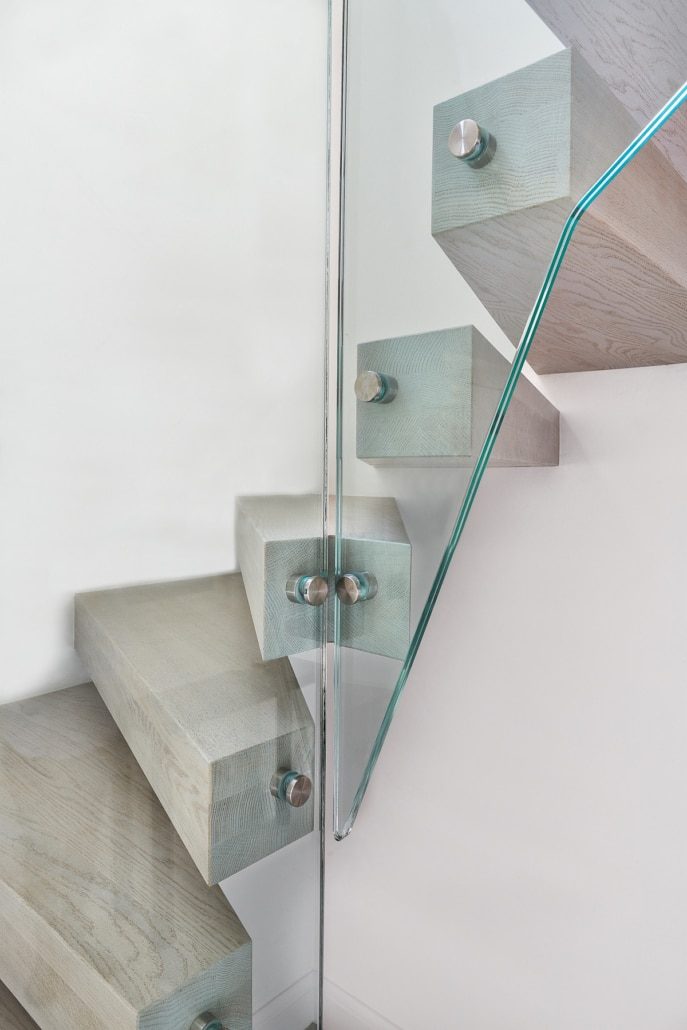How do Cantilevered Staircases Work?
A staircase is one of the elements in a house that have a substantial influence on the artistic appearance of your home. In instances when you receive guests in your home, the staircase is to a great extent the focal point where all the attention is paid. A staircase is expected to be both functional and bear an architectural design that enhances the home’s elegance.
If you own a more than one-story home, then you understand the impact that a staircase has on your house. An efficient staircase is firm and also charming. Some homeowners opt to have standard staircases in their houses and there is nothing wrong with this. Others prefer staircases that are quirky and customized such as the cantilevered ones.
Cantilevered staircases are commonly known as floating staircases due to their appearance after installation. The reason they are gaining popularity, owing to their elegance and stylish edge above conventional staircases. They are eccentric and just by looking at them, it is normal to have questions regarding how they are fixed and how they function.
Perhaps it is wise, to begin with, the most fundamental aspects of cantilevered staircases. This is for the sake of those of us who are unfamiliar with the concept of floating staircases. Cantilevered staircases comprise stairs that are only fastened on one end. Since these stairs are only anchored on a single side, they appear to be hovering or suspended in the air. To see some stunning recently completed projects, check out Jarrod’s floating staircases.
Different Types of Cantilevered Staircases
There are four main kinds of cantilevered staircase categorized according to the materials that their steps are made of.
- Glass steps
- Wooden steps
- Concrete steps
- Stainless steel steps
Ways to Create a Floating Effect
For the cantilevered staircase to have a hovering appearance, there are multiple ways to go about it, as expounded below:
Staircase with a direct attachment to the wall
Each tread is attached to a firm wall using steady bolts while steel spaces are used between the step and the wall. Therefore, the steps look like extensions originating from the wall. Such a design is most suitable when the steps are made of wood and the case is not too broad.
Staircase with systemic glass partitions
Glass panels are fixed on both sides of the case and are engineered to fully hold up the weight of all steps. The steps can either be made out of food perhaps to match the floor, or made out of solid glass to match the glass walls beside the staircase.
Staircase with hidden steel supporting component
In most cases, the steps used are made of wood and are very hefty and solid. For them to be fixed, they need to be located next to a wall that is firmly constructed, out of either concrete or steady bricks. Chemical bolts are used to fasten the steel cantilever feature to the wall and the floor, for enhanced firmness.
Staircase with a noticeable partition stringer
A stringer is a vertical construction that is part of the staircase’s layout. The stringer is secured to the wall and also attached to the ceiling and floor. In this case, it is visible and can be modified into diverse shapes such as zigzag or a simpler form.
Concrete cantilever staircase
A single tread is so heavy that it can weigh more than 100 kilograms. On account of this, transporting, picking up, and fixing such treads needs cautiousness. A lot of professionalism is therefore required when these steps are being installed.
Advantages of Cantilevered Staircases
Reasonable costs
Purchasing the necessary materials and having the cantilevered staircases installed is affordable. In addition to this, maintaining this staircase through cleaning or repairs can be done at pocket-friendly costs.
A broad range of alternatives
Since there are multiple options of cantilevered staircases available, this implies that there is some versatility that comes with these staircases. This versatility is in terms of the materials used to construct the cantilevered steps as well the design and shape that can be assumed by the staircase.
The cantilevered staircases can either be made of concrete, glass, wood, or glass. You can therefore select the material that is in line with your preferences and what matches with other accessories within your house. The choice of the material is also reliant on the ease of installation and maintenance.
Do not shy away from having a staircase that does not have a conventional design. The cantilevered staircase can be contoured to assume a form that you desire. A few examples of these designs are spiral, U-shaped, and L-shaped, among others. Consequently, with cantilevered staircases, you also have the freedom to pair the staircase with any kind of railing that you love.
Provides additional storage space
Cantilevered staircases conceal their support and therefore free up the space below them. The space beneath comes in handy and acts as an extra storage room within the house.
Enhance the sophistication of your house
A floating staircase adds a touch of elegance to your home. Without a doubt, a cantilevered staircase is a feature that offers the house a stylish appearance that gives visitors a reason to stare and admire. It is therefore a key element that needs to be put into consideration as part of the interior design of a house.
With the floating appearance of a cantilevered staircase, a concern would be about safety. You can be assured that these staircases are not only beautiful but also completely firm and safe for use. Cantilevered staircases can be used in all spaces, be it in homes or offices.


